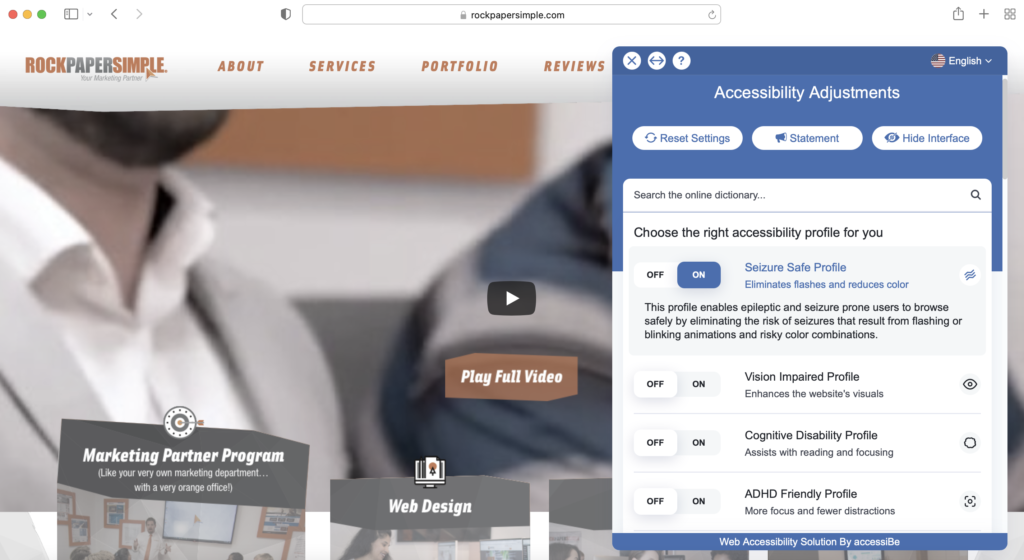 The past several years have seen a surge of lawsuits filed against businesses alleging that their websites violate the Americans with Disabilities Act. In 2020, for example, there were 10,932 ADA federal lawsuits filed, a more than fourfold increase from the 2,722 lawsuits in 2013. The targets of this litigation have included the retailer Target, the pizza chain Domino’s, and even the singer Beyoncé. Being the defendant in an ADA lawsuit can be an expensive and time-consuming proposition, not to mention the reputational hit you’ll take in the public eye. So how can you ensure that your IT hardware and software are ADA-compliant?
The past several years have seen a surge of lawsuits filed against businesses alleging that their websites violate the Americans with Disabilities Act. In 2020, for example, there were 10,932 ADA federal lawsuits filed, a more than fourfold increase from the 2,722 lawsuits in 2013. The targets of this litigation have included the retailer Target, the pizza chain Domino’s, and even the singer Beyoncé. Being the defendant in an ADA lawsuit can be an expensive and time-consuming proposition, not to mention the reputational hit you’ll take in the public eye. So how can you ensure that your IT hardware and software are ADA-compliant?
What is the ADA?
The Americans with Disabilities Act (ADA) is U.S. federal legislation that prohibits discrimination based on disability in many areas of public life. Title II of the ADA bans discrimination on the part of state and local governments. In contrast, Title III of the ADA bans discrimination by “places of public accommodation” (private entities such as restaurants, schools, and movie theaters that are open to the public).
What Does the ADA Say About Hardware and Software?
The ADA was signed into law in 1990, well before technologies such as smartphones and the Internet became widespread. As such, the ADA does not explicitly mention software and hardware as domains that need to accommodate people with disabilities. Despite this omission, judges have repeatedly interpreted the ADA to cover technology such as websites, including several high-profile lawsuits. This is for a simple reason: websites are considered to be an extension of a company as part of its business footprint. In other words, if Title II or Title III of the ADA applies to your organization, then they can also apply to your use of IT software and hardware. ADA compliance for your business software and hardware is a wise choice for multiple reasons:
- Expensive and time-consuming lawsuits: The recent spate of ADA lawsuits isn’t expected to slow down any time soon, and judges have been consistently ruling in the plaintiff’s favor. Getting entangled in an ADA lawsuit can be costly in terms of the legal fees, the labor you expend as a defendant, and the long-term damage to your reputation.
- Greater accessibility: Being compliant with the ADA means that your software and hardware are accessible to a wider audience, whether that’s your customers or employees. According to one survey, 71 percent of online shoppers with disabilities leave a website when they can’t access it, representing billions of dollars in lost business.
Ensuring ADA Compliance for Software and Hardware
Since the ADA does not explicitly address the question of digital technology, it also doesn’t mention how businesses can achieve ADA compliance for their software and hardware. So how can you address the issue of hardware and software ADA compliance within your organization? For websites, in particular, many ADA lawsuit decisions have cited the Web Content Accessibility Guidelines (WCAG) as a guiding principle. WCAG is a set of recommendations from the World Wide Web Consortium (W3C) for improving web accessibility for people with disabilities in four categories: visual, hearing, physical, and cognitive. Although the WCAG guidelines were initially intended only for websites, the recommendations they contain can essentially be applied to other digital content, such as software applications and mobile apps, with little to no modification. For example, the WCAG2ICT document from W3C outlines how the WCAG standards can be applied to a variety of other technologies and software, while other W3C documents address the question of mobile accessibility in particular.
In the future, proposed legislation such as the Online Accessibility Act could modify the ADA to handle the question of digital accessibility. For now, however, making a good-faith effort to comply with the ADA by meeting standards such as WCAG is likely sufficient—as long as you continue to make progress towards the goal of accessibility. Automated website scanning tools can help you realize some areas where you may be falling short of ADA compliance. However, to ensure that your software and hardware truly meet the ADA requirements, you’ll need to join forces with a skilled, experienced partner who can help work on more complicated issues that can’t be detected automatically.
How Artemis Can Help with ADA Compliance
ADA compliance for software, hardware, and websites is a tricky issue—and if you get it wrong, the stakes could be enormous. That’s why many businesses have chosen to partner with an IT solutions provider like Artemis, who can assist them along the way. Artemis helps our clients navigate the constantly shifting regulatory compliance landscape. We help companies comply with laws and regulations, including ADA, HIPAA, GDPR, SOX, PCI-DSS, and more. To learn more about how Artemis can help with ADA compliance, get in touch with our team of experts today to chat about your situation.
